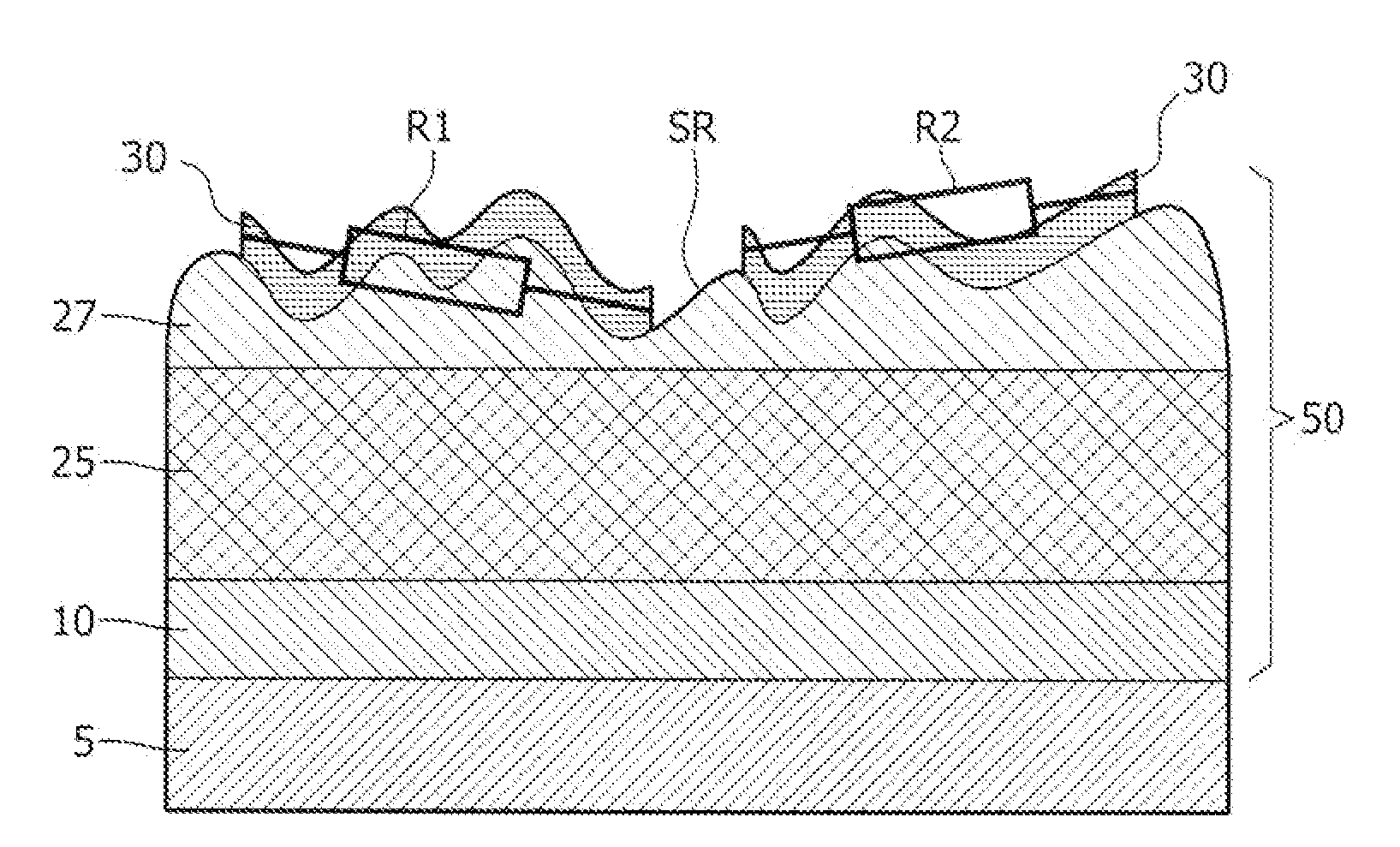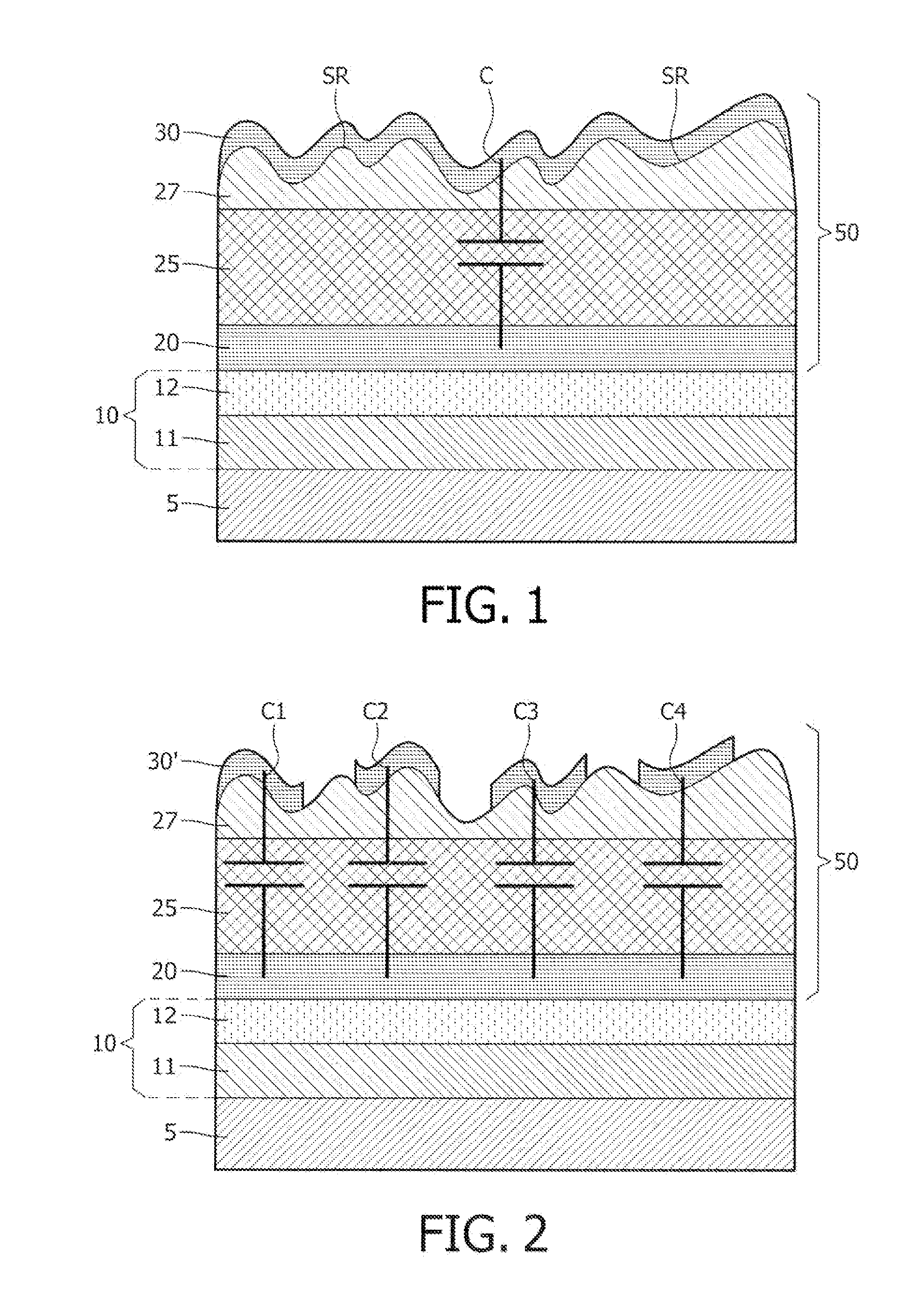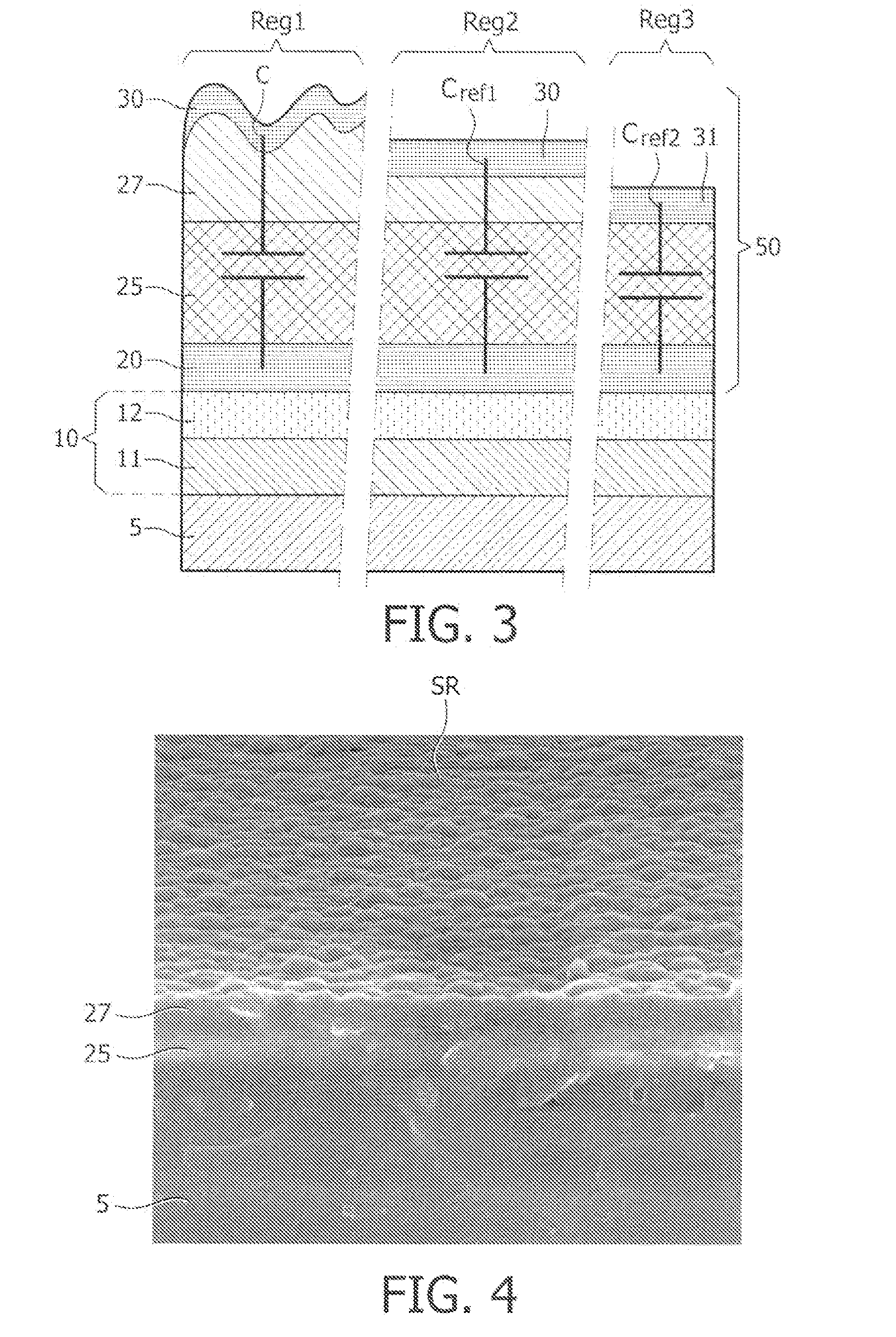Physical structure for use in a physical unclonable
a physical structure and physical technology, applied in the field of physical structures for use in physical unclonables, can solve the problems of limited variation of electrical properties and inability to easily control, and achieve the effect of increasing confidence and us
- Summary
- Abstract
- Description
- Claims
- Application Information
AI Technical Summary
Benefits of technology
Problems solved by technology
Method used
Image
Examples
first embodiment
[0042]FIG. 1 shows a cross-sectional view of a semiconductor device with a capacitor for use in a PUF in accordance with the invention. The semiconductor device comprises a substrate 5 comprising a dielectric material, such as silicon oxide at its upper interface in this example. It must be noted that this may be other dielectric materials as well and even conductive materials (i.e. that need to establish a contact with the physical structure). In the substrate 5 there can be electronic components that together form an electronic circuit, such as an FRAM. On the substrate 5 there has been provided an adhesion layer 10, which comprises of a first sub-layer 11 and a second sub-layer 12. The first sub-layer 11 comprises titanium-oxide (TiOx) and the second-sub-layer 12 that has been provided on the first sub-layer 11 comprises titanium (Ti). Further a physical structure 50 is provided on the second sub-layer 12, which in this embodiment comprises a stack of a bottom conductive layer 20...
second embodiment
[0050]FIG. 2 shows a cross-sectional view of another semiconductor device with a capacitor for use in a PUF in accordance with the invention. This embodiment will be discussed in as far as it differs from FIG. 1. Whereas in FIG. 1 there is only one capacitor C, in FIG. 2 there is a plurality of capacitors that share a common electrode (the bottom conductive layer). This plurality of capacitors C1, C2, C3, C4 is obtained by patterning the top conductive layer 30′. Depending on the spread in capacitance value of the capacitor in FIG. 1 more or less data bits may be extracted for use in an encryption key in a PUF. In FIG. 2 the plurality of capacitors C1, C2, C3, C4 open up to possibility of extracting even more bits for use in the encryption key. A very important variant of FIG. 2 is a plurality of capacitors C1, C2, C3, C4 wherein the top conductive layer is a common electrode of all capacitors and the bottom conductive layers is patterned so as to form individual electrodes of the p...
third embodiment
[0051]FIG. 3 shows a cross-sectional view of yet another semiconductor device with a capacitor and two reference capacitors for use in a PUF in accordance with the invention. The semiconductor device has three regions Reg1, Reg2, Reg3. The first region Reg1 comprises the capacitor C as discussed in FIG. 1 or, alternatively, a plurality of capacitors C1, C2, C3, C4 as discussed in FIG. 2. The second region Reg2 comprises a first reference capacitor Cref1. In the first reference capacitor Cref1 the silicon nitride layer 27, onto which the top conductive layer 30 is provided, has no rough surface. The first reference capacitance Cref1 can be manufactured as follows. After manufacturing of the silicon nitride layer 27 a CMP step or anisotropic etch step is carried out which flattens the upper surface of the silicon nitride layer 27. The silicon nitride layer 27 to be formed will then have a flat surface. The resulting reference capacitance Cref1 will have a relatively low k-value betwee...
PUM
 Login to View More
Login to View More Abstract
Description
Claims
Application Information
 Login to View More
Login to View More - R&D
- Intellectual Property
- Life Sciences
- Materials
- Tech Scout
- Unparalleled Data Quality
- Higher Quality Content
- 60% Fewer Hallucinations
Browse by: Latest US Patents, China's latest patents, Technical Efficacy Thesaurus, Application Domain, Technology Topic, Popular Technical Reports.
© 2025 PatSnap. All rights reserved.Legal|Privacy policy|Modern Slavery Act Transparency Statement|Sitemap|About US| Contact US: help@patsnap.com



